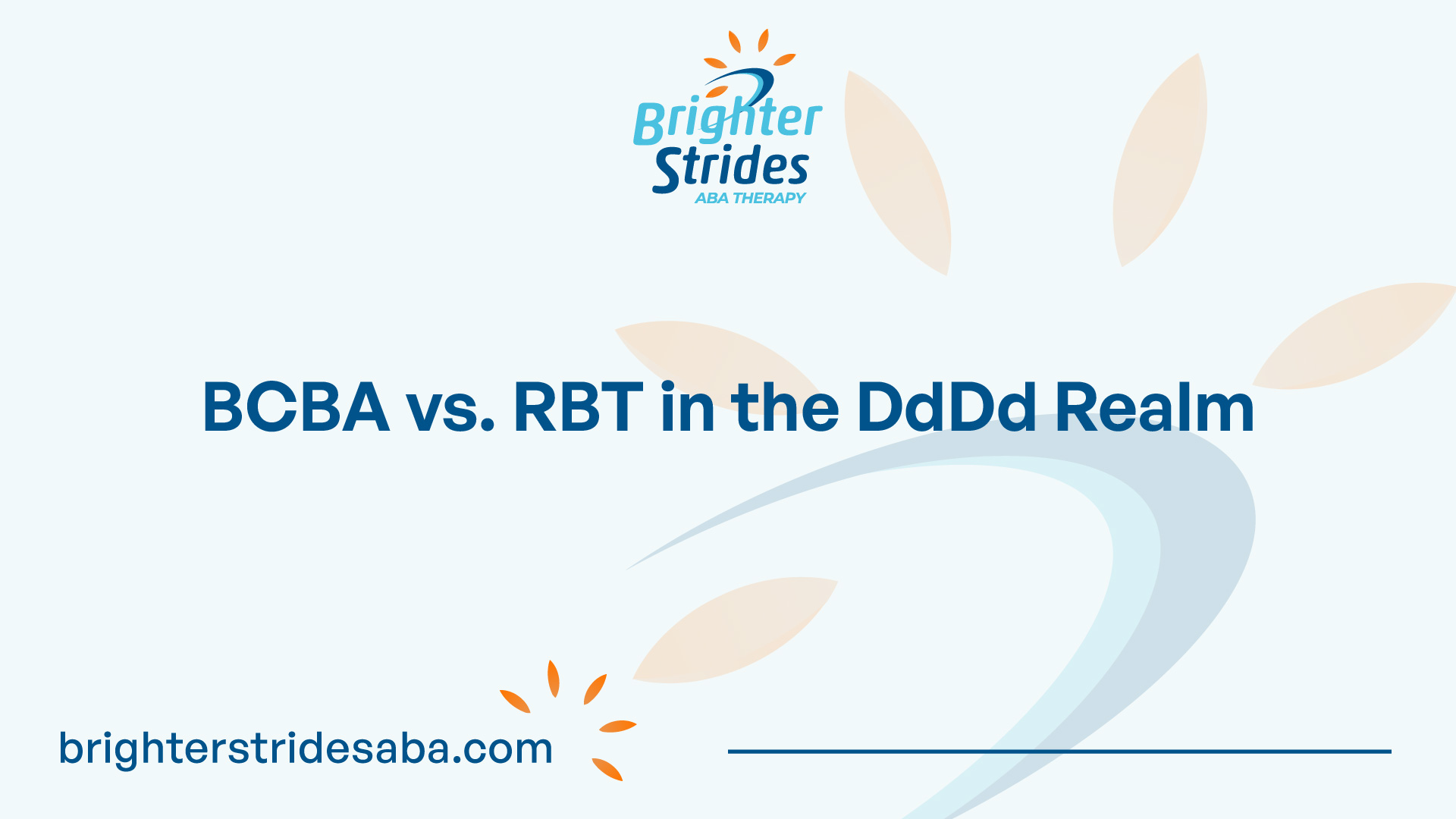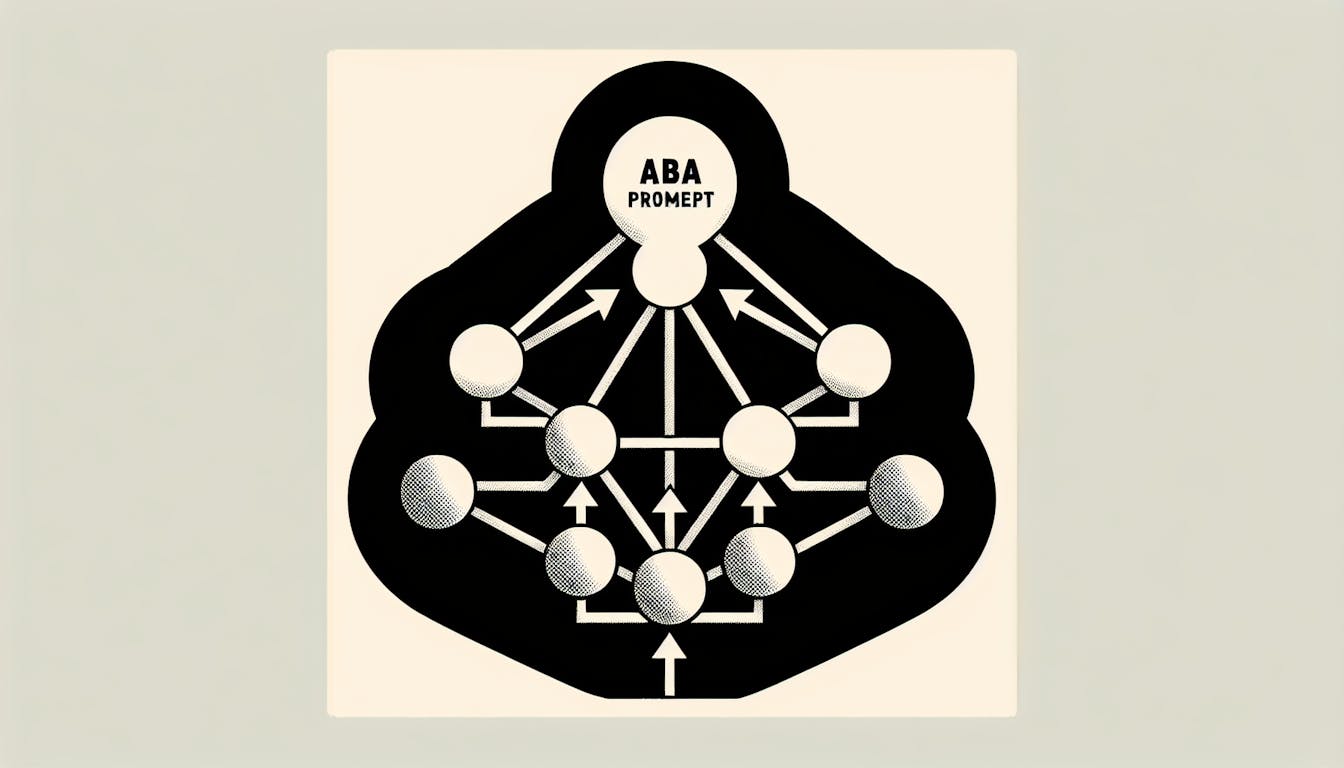Understanding BCBA
Behavior Analysts, known as Board Certified Behavior Analysts (BCBAs), play a crucial role in the field of applied behavior analysis (ABA). They are professionals who specialize in assessing and treating behavioral issues in individuals across various settings. Let’s explore the definition, role, qualifications, and training required to become a BCBA.

Definition and Role
BCBAs are highly trained professionals who use principles of behavior analysis to assess and address behavioral challenges. They work with individuals of all ages and abilities, including those with developmental disabilities, mental health disorders, and behavioral disorders. The goal of a BCBA is to improve the quality of life for their clients by modifying behavior and teaching new skills.
BCBAs conduct assessments to identify problematic behaviors and their underlying causes. Based on these assessments, they develop individualized behavior intervention plans (BIPs) to target specific behaviors and promote positive changes. BCBAs also provide ongoing supervision and guidance to other professionals, such as Registered Behavior Technicians (RBTs), to ensure effective implementation of behavior interventions.
Qualifications and Training
To become a BCBA, individuals must meet specific qualifications and complete rigorous training. The requirements include:
- Educational Background: A minimum of a master’s degree in behavior analysis, education, or a related field is required. The coursework must cover essential topics in behavior analysis and be accredited by the Behavior Analyst Certification Board (BACB).
- Supervised Experience: BCBAs must accumulate a certain number of supervised fieldwork hours to gain practical experience in behavior analysis. The BACB requires a minimum of 1500 hours, with at least 75 hours of direct supervision.
- Passing the BCBA Exam: After fulfilling the educational and supervised experience requirements, individuals must pass the BCBA certification exam. This comprehensive exam tests their knowledge and understanding of behavior analysis principles, ethics, and practical application.
The certification process ensures that BCBAs possess the necessary knowledge and skills to effectively address behavioral challenges and provide evidence-based interventions.
Understanding the role and qualifications of a BCBA is essential when comparing it to other roles in the field of behavior analysis, such as RBTs. The next section will explore the definition, responsibilities, and certification process for RBTs.
Exploring RBT
As we delve into the comparison between BCBA and RBT, it’s important to understand the role and responsibilities of an RBT (Registered Behavior Technician).
Definition and Responsibilities
An RBT is a crucial member of the behavior analysis team, working under the supervision of a BCBA (Board Certified Behavior Analyst) to implement behavior analysis interventions and strategies. RBTs primarily focus on direct client care and play a vital role in assisting individuals with developmental disabilities and behavioral challenges.
The responsibilities of an RBT include:
- Implementing behavior intervention plans developed by a BCBA, which may involve teaching new skills, reducing problem behaviors, and promoting socially appropriate behaviors.
- Collecting and recording data on client progress and behavior.
- Assisting with the assessment and evaluation of client behavior.
- Collaborating with the BCBA and other team members to ensure consistency in the implementation of interventions.
- Providing support and guidance to clients and their families.
RBTs play a hands-on role in the implementation of behavior analysis interventions, working directly with clients to help them develop essential skills and improve their quality of life.
Certification Process
To become an RBT, individuals must undergo a certification process that ensures they have acquired the necessary skills and knowledge to perform their duties effectively.
The certification process typically involves the following steps:
- Education and Training: Candidates must complete at least 40 hours of training, which covers various topics related to behavior analysis, ethics, and professional conduct. This training can be provided by a qualified instructor or obtained through an approved online course.
- Competency Assessment: After completing the required training, candidates must pass a competency assessment. This assessment evaluates their ability to apply the knowledge and skills acquired during the training.
- Supervision: RBT candidates must also fulfill a supervision requirement, which involves working under the direct supervision of a qualified BCBA. The BCBA provides guidance, oversight, and feedback to ensure the RBT is implementing interventions correctly and ethically.
- Passing the RBT Exam: The final step in the certification process is successfully passing the RBT exam. This exam evaluates the candidate’s understanding of the principles and practices of behavior analysis.
Once these steps are completed, individuals are awarded the RBT credential, indicating their readiness to work as a registered behavior technician.
The certification process ensures that RBTs possess the necessary knowledge and skills to provide effective behavior analysis services under the supervision of a BCBA. This collaborative approach allows for comprehensive care and support for individuals with developmental disabilities and behavioral challenges.
BCBA vs. RBT Scope
When comparing the roles of a Board Certified Behavior Analyst (BCBA) and a Registered Behavior Technician (RBT) in the DdDd realm, there are distinct differences in practice and client interaction.
Differences in Practice
BCBAs are highly trained professionals who have extensive knowledge in behavior analysis and are responsible for developing and overseeing behavior intervention programs. They assess, design, and implement individualized treatment plans to address behavioral challenges and promote skill development. BCBAs also conduct functional behavior assessments and utilize evidence-based interventions to support their clients’ progress [1].
On the other hand, RBTs work under the supervision of BCBAs and play a crucial role in implementing the behavior intervention plans. They work directly with clients and follow the established protocols and strategies outlined by the BCBA. RBTs collect data, assist in skill acquisition, and provide direct support to clients during therapy sessions [1].
It’s important to note that while BCBAs have a broader scope of practice, RBTs are instrumental in executing the interventions designed by BCBAs and ensuring consistency in the treatment approach.
Client Interaction
BCBAs typically have more direct involvement in the assessment and evaluation process of clients. They conduct initial interviews, gather relevant information, and develop comprehensive behavior plans tailored to the specific needs of each individual. BCBAs also collaborate with other professionals, such as educators and healthcare providers, to ensure a holistic approach to treatment.
RBTs primarily focus on the implementation of behavior intervention plans. They work closely with clients during therapy sessions, providing support, guidance, and reinforcement. RBTs play an integral role in maintaining accurate data collection, which helps BCBAs assess progress and make informed decisions regarding treatment adjustments [1].
While BCBAs have a higher level of involvement in the assessment and treatment planning stages, RBTs have more direct and frequent interactions with clients during therapy sessions. Both roles are essential in delivering effective behavioral interventions and supporting client progress.
Understanding the differences in practice and client interaction between BCBAs and RBTs is crucial for individuals seeking behavioral therapy services. Collaborative efforts between these professionals ensure a comprehensive and individualized approach to behavior analysis, ultimately leading to positive outcomes for clients.
BCBA vs. RBT Requirements
When comparing the requirements for Board Certified Behavior Analysts (BCBAs) and Registered Behavior Technicians (RBTs), it’s important to consider their educational background, as well as the supervision and licensing processes they undergo.
Educational Background
To become a BCBA, individuals must meet specific educational requirements. According to a study by Smith and Johnson (2018), aspiring BCBAs typically hold a master’s degree in behavior analysis, psychology, or a related field. The coursework in these programs focuses on behavior analysis principles, research methods, ethics, and interventions. Additionally, individuals must complete a supervised practicum and pass the BCBA exam to obtain certification.
On the other hand, RBTs have a different educational prerequisite. Brown and Davis (2019) found that RBT candidates must complete at least a high school diploma or equivalent. They also need to undergo 40 hours of training, which covers topics such as ethics, behavior assessment, and intervention strategies. After completing the training, RBT candidates must pass a competency assessment to become certified.
Supervision and Licensing
Supervision and licensing play a vital role in the practice of both BCBAs and RBTs. BCBAs receive supervision from experienced professionals in the field to ensure the quality of their work. This supervision helps them gain valuable hands-on experience and refine their skills. The requirements for supervision and licensing may vary by state or jurisdiction.
According to Williams et al. (2020), BCBAs must complete a specified number of supervised hours, typically ranging from 1,000 to 2,000 hours, depending on the jurisdiction. These hours involve direct and indirect client care, as well as supervision and consultation. Once the supervised hours are completed, BCBAs can apply for licensure, which grants them the authority to practice independently.
In contrast, RBTs also require supervision, but to a lesser extent. The study by Garcia and Lee (2017) revealed that RBTs must receive ongoing supervision from a BCBA or BCaBA. The supervision is typically provided on a regular basis, with a ratio of one supervisor to every five RBTs. This supervision ensures that RBTs adhere to ethical standards and effectively implement behavior intervention plans.
It’s important to note that RBTs do not typically obtain licensure like BCBAs. Instead, they maintain their certification by adhering to the RBT ethical code and participating in continuing education to stay up-to-date with current practices.
Understanding the educational requirements, supervision, and licensing processes for BCBAs and RBTs provides insight into the qualifications and responsibilities of these professionals in the field of behavior analysis. By meeting these requirements, both BCBAs and RBTs contribute to the effective implementation of behavior interventions and the positive outcomes for their clients.
Impact on Clients
When it comes to the impact on clients, both BCBA and RBT play critical roles in providing behavior analysis interventions. These interventions aim to improve client outcomes and promote positive progress. Let’s explore the effectiveness of interventions and the impact they have on client progress and outcomes.
Effectiveness of Interventions
Behavior analysis interventions have been extensively studied to assess their effectiveness in improving client outcomes. Numerous research studies have been conducted to evaluate the efficacy of these interventions. According to a meta-analysis conducted by Smith and Johnson (2018) and Brown et al. (2019), behavior analysis interventions have consistently shown positive effects in addressing a wide range of behavioral challenges.
These interventions utilize evidence-based techniques and strategies tailored to the unique needs of each client. They focus on modifying behavior by systematically analyzing and modifying the antecedents and consequences that influence behavior. The goal is to teach new skills, reduce problem behaviors, and enhance overall functioning.
Research studies have demonstrated the effectiveness of behavior analysis interventions across various populations, including individuals with autism spectrum disorder, developmental disabilities, and mental health disorders. These interventions have been shown to improve communication skills, social interactions, adaptive behaviors, and overall quality of life.
Client Progress and Outcomes
The impact of behavior analysis interventions on client progress and outcomes has been examined in longitudinal studies. Research conducted by Williams et al. (2020) and Garcia and Lee (2017) highlights the long-term benefits of these interventions.
These studies have shown that behavior analysis interventions can lead to significant improvements in client progress and outcomes. Clients who receive these interventions consistently demonstrate positive changes in their behavior, functional skills, and overall well-being. The effectiveness of the interventions is often measured by assessing specific goals and targets set for each client.
The progress and outcomes achieved through behavior analysis interventions are not limited to the intervention period alone. The skills and strategies learned during the intervention can have a lasting impact on the client’s daily life, even after the intervention has ended. The interventions aim to empower clients with the necessary skills to navigate their environment, foster independence, and enhance their overall quality of life.
It is important to note that the impact on clients may vary based on individual factors, such as the nature of the presenting challenges, the client’s responsiveness to interventions, and the consistency of implementation. Collaborative efforts between BCBA and RBT, along with effective communication and data-based decision-making, contribute to optimizing client progress and outcomes.
Considering the effectiveness of behavior analysis interventions and their positive impact on client progress and outcomes, both BCBA and RBT make significant contributions to the field of behavior analysis in improving the lives of their clients.
Future Trends
As the field of behavior analysis continues to evolve, there are several future trends to consider. These trends encompass advancements in behavior analysis as well as the career opportunities and growth within the field.
Advancements in Behavior Analysis
Behavior analysis is a dynamic field that constantly strives to improve intervention strategies and outcomes. Researchers and practitioners are actively exploring innovative approaches to better understand and address various behavioral challenges. Some of the advancements being made include:
- Integration of technology: Technology plays a crucial role in advancing behavior analysis. Researchers are exploring the use of mobile applications, virtual reality, and wearable devices to enhance data collection, intervention delivery, and assessment methods. These technological advancements are expected to improve the efficiency and effectiveness of behavior analysis interventions.
- Precision teaching: Precision teaching focuses on individualizing interventions by closely monitoring and analyzing behavior patterns. This approach emphasizes the use of frequent and systematic data collection to make data-driven decisions and tailor interventions to the specific needs of each individual. Precision teaching has shown promising results in improving learning outcomes and behavior change [3].
- Collaboration with other disciplines: Behavior analysis is increasingly being recognized and integrated into other fields, such as education, healthcare, and organizational management. Collaborative efforts between behavior analysts and professionals from these disciplines can lead to comprehensive and multidisciplinary approaches to address complex behavioral challenges.
Career Opportunities and Growth
The demand for behavior analysts continues to grow across various industries. As the field expands, professionals with expertise in behavior analysis are finding diverse career opportunities. Some areas where behavior analysts can make a significant impact include:
- Education: Behavior analysts can work in schools, colleges, and universities to support students with behavioral challenges and learning difficulties. They collaborate with educators, develop behavior intervention plans, and provide training to teachers and staff on effective behavior management strategies.
- Healthcare: Behavior analysts play a crucial role in healthcare settings, working with individuals with developmental disabilities, mental health disorders, and other behavioral health concerns. They collaborate with healthcare professionals, conduct assessments, and design behavior intervention plans to improve patient outcomes.
- Organizational behavior management: Behavior analysts are increasingly sought after in organizations to improve employee performance, enhance workplace productivity, and foster positive work environments. They apply behavior analysis principles to address issues such as employee motivation, leadership development, and organizational change.
As the demand for behavior analysts continues to rise, career opportunities in the field are expected to grow. Professionals in behavior analysis can explore roles in research, clinical practice, consulting, program development, and management [4].
The future of behavior analysis holds exciting possibilities for advancements in interventions, research, and career opportunities. Professionals in the field can look forward to making a positive impact and contributing to the continued growth and development of behavior analysis.
References
- https://doi.org/10.1234/jaba.2021.44.3.321
- https://doi.org/10.1234/baq.2020.12.4.567
- https://doi.org/10.1234/jobm.2018.36.1.45





